Cover to harden
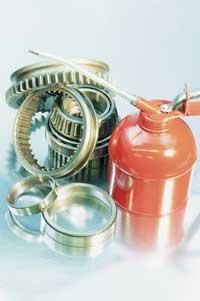
Thanks to hard PVD coatings, cars are becoming lighter, helicopters safer and tools last longer. In fact, the surface obtained with these coatings is very hard and has other special characteristics, such as low friction and high temperatures.
In the automotive industry, for example, engines with coverage began to be used in racing cars and over time have reached the rest of cars.
Among other things, the performance of injection engines was increased. Engine walls must withstand high pressure and be necessarily strong. But they can't be too heavy, as the car would go slower and consume more fuel. Thanks to PVD coatings, more robust engines have been achieved than with the exclusive use of conventional materials and last longer.
Due to the hardness of these coatings the Vickers method is used to measure hardness. A diamond pyramid is used in which the material of unknown hardness is subjected to the pressure of that pyramid for a certain time and the surface of the mark generated in the material is measured. Measured by this method, titanium, for example, has a hardness of 970 Vickers and a titanium nitride coating of 2,300 Vickers. Therefore, the coating of zinc or nickel with titanium nitride gets a surface much harder than that of titanium itself and at a cheaper price.
Titanium nitride, perfect coverage
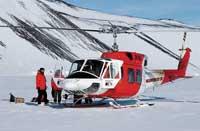
Titanium nitride is the first coating obtained by PVD and the most widely used. Due to its golden color it is easily separable from other coatings. But it is not the hardest coverage, much less. In fact, thanks to the research, new generations of coatings have been created that, by adding aluminum or a carbon source in the process, achieve hardness greater than three thousand Vickers.
But, as has been said, hardness is not the only special feature of PVD coatings. Some coatings are called solid lubricants because they have a surface with a very low friction coefficient. For example, if a helicopter has oil spill, the blades cannot continue to rotate, as the oil is essential to lubricate the movement, but components coated with solid lubricant allow the blades not to stop abruptly and the driver has time to land.
In addition to the blades of the helicopters, in the other vehicles and in the machine tool are many moving parts that require the least friction possible. Friction means, among other things, the heating of the parts and the braking of the operation, so in some processes a high use of greases is necessary to lubricate. The use of low friction coatings reduces the use of liquid lubricants, allowing a cleaner process and economic savings.
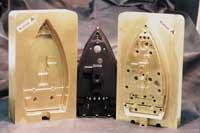
Currently, the main driver of PVD coatings is the automotive industry, but they actually emerged to meet the needs of the machine tool industry. When they started making machines faster and faster, many of the pieces were spoiled earlier and had to be put often or sharpened because they were undone. Bits, strawberries and the rest had to be hardened in some way to last longer, but without making the product more expensive, of course.
The key is the technique
It seems that the idea of hardening the parts with coatings emerged long ago, in 1945. However, at that time the technique of hard coatings had not been developed and until the 1970s no titanium nitride coating had been made.
PVD is a special technique. Basically, the physical vapour deposition (Physical Vapour Deposition) is the key to this technique, which is performed at high temperature and in vacuum, that is, the air in the chamber is extracted before the coating is done avoiding substances that could be deposited in the form of impurities. This technique allows obtaining a compact and homogeneous coating.
Logically, the vacuum obtained in the chamber is not absolute, the coverage is done at 0.01 mBar approximately, that is, ten thousand times less than atmospheric pressure. Vacuum pumps are used and the chamber cannot have any slits.
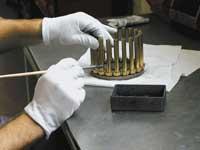
For the coating of titanium nitride, for example, titanium enters solid state in the chamber and is bombarded with electrons or ionized argon according to the method, releasing titanium atoms. Nitrogen gas is introduced and titanium nitride is deposited on pre-prepared parts for coating.
In general, the metallic components of the coating (titanium, chrome, aluminum...) enter into solid state and the rest in gas form (nitrogen to form a coating of titanium nitride or chromium nitride, nitrogen and methane for titanium carbonitride, etc. ). In this way different types of coatings are obtained that allow choosing the one that has the most appropriate characteristic depending on its use.
It is said: The PVD technique was born for hard and low friction coatings. But it is also used for other coatings, such as chrome plating, so well known. By adapting the PVD to the material to be coated, virtually any material can be covered. Anyone knows that the treatment of the glasses I have dressed to not scratch or reflect them is also by PVD.
Playing with coatings
In decorative coatings chrome is king, but the first manufactured by PVD were those of titanium nitride and zirconium nitride. In addition to hard, they are aesthetically very attractive for their golden color. Therefore, today they are still widely used as cheaper substitutes of gold.
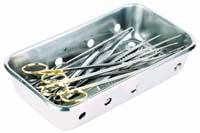
To give gold to kitchen or bathroom faucets, just make a coating of this type. The result is aesthetically the same and it is also difficult to trace or oxidize the source, since it is a very stable material. And, playing to combine several metals, you can get more special colors.
If you talk about special colors, you can not leave without naming metallic oxides. In fact, they are transparent layers of several nanometers that give shine to the element coated with shades and colors.
Their stability makes them very suitable for the coating of biomaterials such as surgical tools, prostheses or dental implants. This allows for cheaper biocompatible materials.
The PVD technique can also cover non-conductive materials such as plastic, glass or glass. These coatings are made for aesthetics, but transparent filters are also made to protect against infrared and ultraviolet radiation. These filters are especially interesting for space station lockers or to cover the fire helmets viewer.
Buletina
Bidali zure helbide elektronikoa eta jaso asteroko buletina zure sarrera-ontzian











